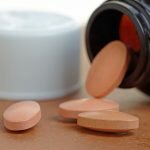Copper Nukes The MRSA Superbug
When patients are admitted to a hospital injured, debilitated or sick, their immune systems are compromised, making them easily susceptible to superbug infections… probably one of the most frightening things that can happen to a patient.
Hospitals are an ideal breeding ground for superbugs because they can survive on surfaces for up to three days and can easily be transferred when one infected person simply touches another, or when a patient or member of hospital staff touches a surface or equipment that has been infected, like a stethoscope. Once the patient is infected, his or her hospital stay is extended, sometimes for months… Sadly, some never leave.
This nightmare is all due to the overuse or misuse of antibiotics, meaning that these infections are very difficult to treat. The most common (and in some cases deadly) superbugs are Clostridium difficile (C.Diff), Methicillin-resistant staphylococcus aureus (MRSA), Enterococcus and Necrotizing fasciitis – the flesh-eating bacterial disease.
The worst is, mainstream medicine is not winning the war on these superbugs. In fact, it is failing miserably. It is estimated that of the 1.7 million Americans who are infected in hospitals each year, at least 99,000 die from superbug infections. It is thought that 7 million people worldwide catch healthcare-associated infections each year.
Some have gone so far as to say that modern medicine will come to an end unless a new generation of antibiotics is developed.
Metallic protection
This is where mainstream medicine gets it wrong: Most efforts to prevent the spread of superbugs have focused on finding new antibiotics… the very thing that started the problem in the first place.
Enter Bill Keevil from the University of Southampton, in the UK, who believes that the natural antibacterial properties of copper could be a simple and effective way to combat these potentially deadly infections.
In a one off experiment, Bill Keevil sterilized copper and stainless steel plates, then coated each of the plates with around 10 million cells of MRSA – one of the superbugs causing havoc in hospitals. The plates were then monitored under a microscope to see what happened to the bacteria.
The results were astounding to say the least. Within a matter of minutes, the MRSA on the copper surface began to die off, whereas the MRSA thrived on the stainless steel plates. Note: If you’ve ever been to a hospital – and, let’s face it, who hasn’t? – you’ll know there are countless stainless steel surfaces… which, according to Keevil’s study, are perfect places to breed superbugs.
Commenting on the results, Keevil said this supports his argument that contact surfaces, like hospital door handles, should be made out of copper or copper alloys. He added that his research has also shown that copper works in two ways, directly and indirectly.
The direct effect comes from the release of copper ions which degrade the DNA of a cell and starves it of oxygen.
The indirect effect is even more rapid. On a dry surface, copper interacts with the bacteria’s metabolism to generate very potent free radicals, which are even quicker than copper at destroying the DNA and effectively causing the cells to suffocate.
So far, Keevil has not been able to establish whether copper can kill superbugs before they get a chance to reproduce. However, if this proves to be the case, we’ll have the perfect solution on our hands that will stop these infections from spreading and evolving into antibiotic resistant superbugs… a far more effective way than new antibiotics. According to the Copper Development Agency, which worked with Southampton University on the experiment, further clinical trials are currently under way.
While the mainstream naysayers may be resistant to the idea of a completely natural solution in the fight against superbugs, the rest of us can indulge in an early celebration… just a bit. After all, it’s not often that we hear about a victory against superbugs.
Did you find this information useful?
Then why not get more expert health recommendations just like this delivered direct to your inbox?
"It is truly refreshing to read a newsletter on the topic of alternative medicine which is scientifically based and reviewed by professionals..." - Robert Sinott
We respect your privacy and will never share your details with anyone else.Bear in mind all the material in this email alert is provided for information purposes only. We are not addressing anyone’s personal situation. Please consult with your own physician before acting on any recommendations contained herein.
Sources:
Superbugs: What are they and how are they formed? Published online, chealth.canoe.ca
How close are we to a nightmarish return to a pre-antibiotic era? Published online, abc.net.au
Does a tomato a day keep depression away? Published online 05.12.12, nhs.uk
- Comments (1)
- Facebook Comments (0)
Comments are closed.













Years ago all municipal buildings had copper or alloy e.g. door handles, handrails and taps. Maybe we should go back to that.